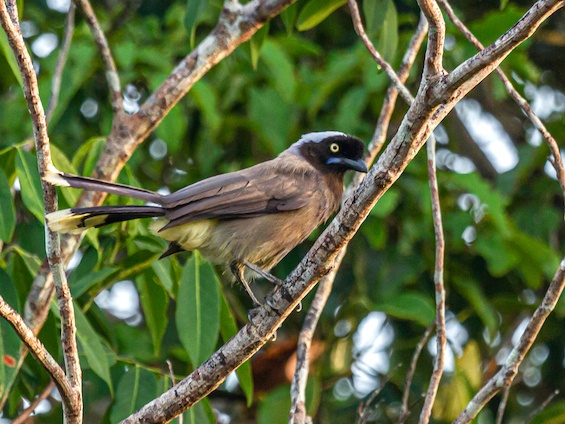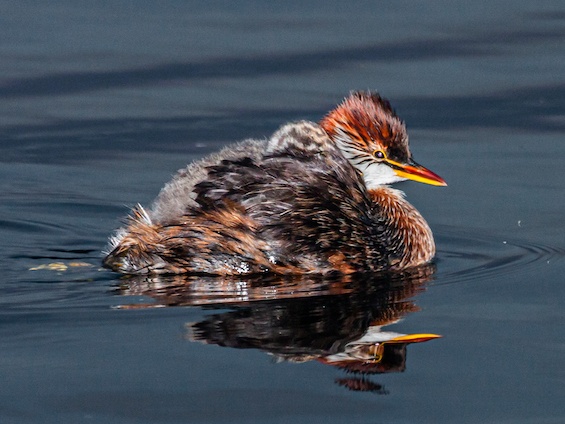Tour Features
The Andes are, by far, Colombia’s most relevant geographical feature. In the southwestern departments of Cauca and Nariño, the Andes divide in three different mountain ranges, known as ‘cordilleras.’ The Cordillera Occidental (western range), spans from the Pacific coast to Cauca Valley, followed to the east by the central range or Cordillera Central, which is bordered by the Cauca Valley to the west and the Magdalena River to the east. Finally, the Cordillera Oriental (eastern range) comprises the northeastern part of the country, running down to the Guajira Peninsula. Highest peaks in the Cordillera Occidental reach more than 4,700 m (15,500 ft.) In the central and eastern Cordilleras, they are even higher, reaching 5,000 metres (16,500 ft.) above sea level. Most of the country’s important cities spread across Colombia’s interior highlands, with Cali on the western range, Medellín, Manizales, Pereira and Armenia on the Central Cordillera and Bogotá, Bucaramanga and Cúcuta on the eastern range.
But there’s more than the Andes in Colombia. The eastern part of the country is covered by the vast savannah of the Llanos, part of the Orinoco River basin, and its southeastern corner by the Amazon forest. These two lowlands cover more than half of Colombia’s territory, although less than 6% of its population lives there. Colombia’s Caribbean coast is well known by its spectacular scenery. Nearly 22% of the country’s population live here, mainly in Cartagena and Barranquilla. This is generally an area of low-lying plains, with some exceptions, like the mountain range of Sierra Nevada de Santa Marta in the north, La Guajira Desert in the northernmost tip of the peninsula, and de densely vegetated mountains at Serranía de Baudó, next to the Panama border, on the Pacific.
Colombia’s animal and plant diversity are mind-boggling. There are 1,957 bird species (following IOC 8.1 species list standards), 623 amphibians, 467 mammals, 518 reptiles, and roughly 3,200 species of fish. About 18% of these animals are endemics. Plants account for staggering 51,220 species with nearly 30% endemics. Colombia boasts the highest number of orchid and bird species on Earth; it has the second highest diversity of plants, amphibians, butterflies and fresh water fish, third highest diversity of reptiles and fourth highest mammal diversity of the planet.
Our tour has been specially designed for birders and naturalists to enjoy watching and photographing Colombia’s natural diversity. We invite you to join us on this Neotropical travel adventure, exploring three spectacular habitats in Colombia: the Andes, Santa Marta Mountains and the Caribbean coast.
Some Birds We’ll Look For
Andes: Little Tinamou, Cauca and Wattled guans, Chestnut Wood-Quail, Grey-headed and Tolima doves, Buffy Helmetcrest, Purple-backed Thronbill, Blue-throated Starfrontlet, Coopery-bellied Puffleg, Greater Sapphirewing, Sword-billed Hummingbird, Amethys-throated Sunangel, Glowing Puffleg, Tolima Blossomcrown, Shining Sunbeam, Andean Pygmy Owl, Black-billed and Gray-breasted mountain toucans, Crimson-rumped and Emerald Toucanets, Yellow-vented, Bar-bellied and Powerful woodpeckers, Brown-breasted and Golden-plumed parakeets, Rusty-faced Parrot, Many-striped Canastero, White-chinned Thistletail, Silvery throated Spinetail, Ocellated, Matorral and Stile’s tapaculos, Green-and-black and Barred Fruiteater, Rufous-breasted Flycatcher, Smoky Bush-Tyrant, Dusky Piha, Andean Solitaire, Hooded, Moustached, Brown-banded, Bicoloured, Chestnut-crowned, Slate-crowned, Undulated and Chestnut-naped antpittas, Golden-fronted Whitestart, Golden-crowned Redstart, Black-collared Jay, Red-ruffed Fruitcrow, Chestnut-breasted Wren, Yellow-headed Brush Finch, Buff-breasted Mountain-Tanager, Multicolored Tanager, Chestnut-crested Cotinga, Rufous-browed Conebill, Paramo Seedeater, Plush-capped Finch, Pale-naped Brush-Finch, Black-headed Hemispingus, Masked Saltator and Yellow-billed Cacique.
Guajira and Caribbean coast: Crested Bobwhite, Green, Bare-faced, Glossy and White ibises, Limpkin, Black Hawk-Eagle, Savanna Hawk, Snail Kite, Large-billed Tern, White-tipped Dove, White-collared and Chestnut-collared swifts, Sapphire-throated Hummingbird, Blue-fronted Lancebill, Green Violetear, Brown Violetear, White-vented Plumeleteer, Steely-vented Hummingbird, Collared Aracari, Keel-billed Toucan, Russet-throated and Pied puffbirds, Golden-olive, Lineated and Crimson-crested woodpeckers, Military Macaw, Red-billed Parrot, Scarlet-fronted and Orange-chinned Parakeet, Blue-winged Parrotlet, Caribbean Hornero, Yellow-chinned Spinetail, Black-backed Antshrike, Cattle Tyrant, Greenish and Forest elaenias, Yellow-olive and Ochre-faced (Yellow-breasted) flycatchers, Ochre-bellied Flycatcher, Black-headed Tody-Flycatcher, Social and Piratic flycatchers, Cinereous, Cinnamon and White-winged becard, Masked Tityra, Stripe-backed, Rufous-breasted and Rufous-and-white wrens, Yellow-legged, Black-hooded, Pale-breasted, and Black-billed thrush, Black-chested Jay, Golden-fronted Greenlet, Brown-capped Vireo, Orange-billed Nightingale Thrush, Bicoloured Conebill, Rusty Flowerpiercer, Bay-headed, Black-headed, Black-capped, Blue-gray, Palm, White-lined and Crimson-backed tanagers, Streaked and Grayish saltators, Golden-winged Sparrow, Yellow-bellied Seedeater, Yellow-backed Oriole, Crested Oropendola and Thick-billed Euphonia.
Santa Marta mountains: Santa Marta Blossomcrown, Santa Marta Parakeet, Santa Marta Foliage Gleaner, Santa Marta Tapaculo, Santa Marta Antbird, Santa Marta Sabrewing, Santa Marta Wood-Wren and Santa Marta Brush Finch, White-rumped Hawk, Band-tailed and Sickle-winged guans, Band-tailed Pigeon, Scarlet-fronted Parakeet, Red-billed Parrot, Masked Trogon, Golden-olive Woodpecker, Yellow-billed (Groove-billed) Toucanet, Emerald Toucanet, Montane Foliage Gleaner, Spotted Barbtail, Streaked Xenops, Gray-throated Leaftosser, Strong-billed Woodcreeper, Rusty-breasted and Rufous antpittas Mountain Elaenia, Black-capped, Venezuelan and White-throated tyrannulets, Olive-striped Flycatcher, Black-throated Tody-Tyrant, Cinnamon Flycatcher, Yellow-bellied Chat Tyrant, Golden-breasted Fruiteater, Orange-billed and Slaty-backed nightingale thrushes, Great Thrush, Black-hooded Thrush, Slate-throated Redstart, Three-striped Warbler, White-sided Flowerpiercer and Blue-naped Chlorophonia.
INFORMATION
Tour Interest:
Tour Type:
Tour Dates:
Tour Duration:
Starts/Ends:
Best time to go:
Prices:
What’s Included?
What’s Not Included?
Itinerary ( 16 days )
Day
1
Arrival
Meeting at El Dorado International Airport. Drive to town check into our hotel. O/N Bogota.
Day
2
Bogotá to Chingaza.
Bogotá to Chingaza, La Calera Garden and on to Ibagué. O/N Ibagué.
Day
3
Nevado de Tolima National Park.
Full day Nevado de Tolima National Park. O/N Ibagué.
Day
4
Alto de la Línea & on to Otún-Quimbaya.
Ibagué to Alto de la Línea and on to Otún-Quimbaya. O/N Otún-Quimbaya.
Day
5
Otún-Quimbaya.
Full day birding Otún-Quimbaya. O/N Otún-Quimbaya.
Day
6
Otún-Quimbaya to Río Blanco.
Otún-Quimbaya to Río Blanco and Manizales. O/N Manizales.
Day
7
Río Blanco Nature Reserve.
Full day birding Río Blanco Nature Reserve. O/N Manizales.
Day
8
Nevado del Ruiz.
Full day birding Nevado del Ruiz and old road to Manizales. O/N Manizales.
Day
9
Tinamou Reserve.
Tinamou Reserve and flight to Barranquilla. O/N Barranquilla.
Day
10
Salamanca National Park.
Salamanca National Park and Riohacha. O/N Riohacha.
Day
11
Flamencos & El Dorado Reserve.
Flamencos and El Dorado Reserve. O/N El Dorado Lodge.
Day
12 & 13
Sierra Nevada de Santa Marta.
Two full days birding the Sierra Nevada de Santa Marta. O/N El Dorado Lodge.
Day
14
El Dorado Reserve.
El Dorado Reserve to Minca and Santa Marta City. O/N Santa Marta.
Day
15
Flight to Bogotá.
Santa Marta to Tayrona and flight to Bogota. O/N Bogota.
Day
16
Tour Conclusion.
Transfer to El Dorado International Airport in Bogotá. Tour conclusion.



































